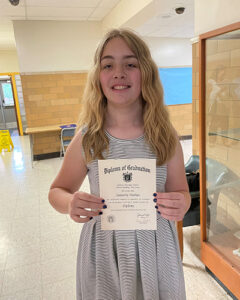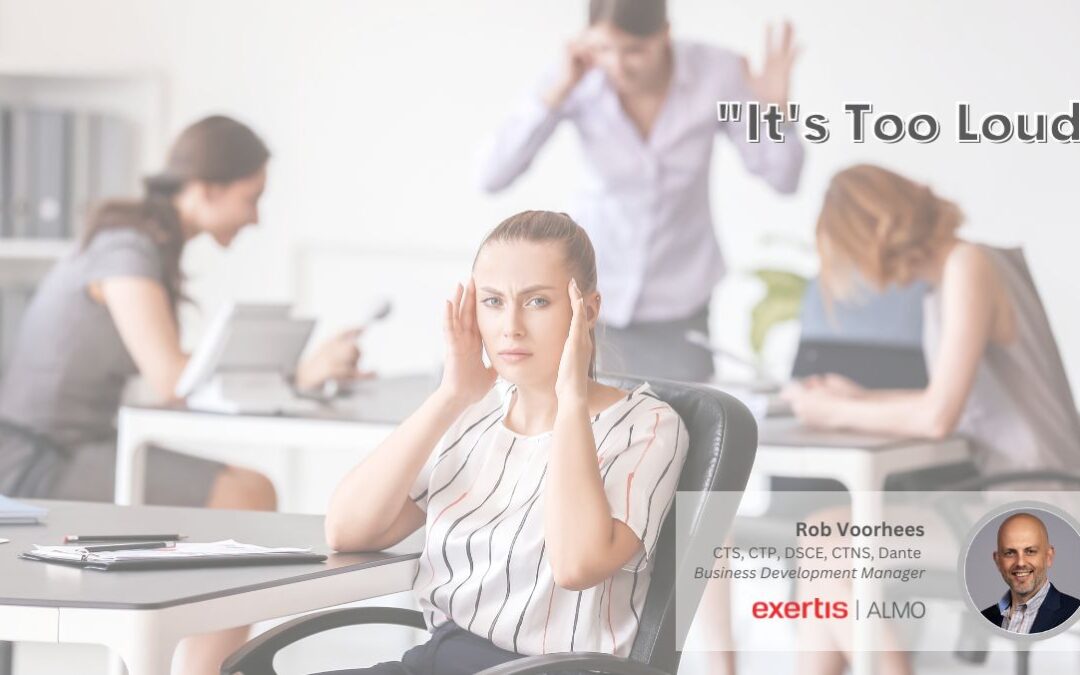Are you neurodiverse?
Imagine yourself at a concert. You are standing directly in front of the stage and as close to the stackable subs as you can get. The overhead lighting is shining down on you and rapidly changing colors to play along with the theme of the show. It is a packed house and you are elbow to elbow with fans of all ages. Sounds like a typical fun night, right?

Now imagine that the speakers, which you are so close to, are playing a sound, equivalent of 100 nails being dragged across a chalkboard. The lights are as if a strobe light is being shot directly into your eyes, and the crowd is yelling directly at you for 3 hours straight. Not as much fun, is it?
This is what it could possibly be like for someone who is on the Autism spectrum.
Why it matters
According to mayoclinic.org, Autism Spectrum Disorder is a condition related to brain development that affects how a person perceives and socializes with others, causing problems in social interaction and communication. Overstimulation of the senses is just one of the possible “patterns of behavior” that can be exhibited by someone “on the spectrum.”
So, you might be asking yourself – why are we talking about this, and why have I chosen to write about it? This topic is very special to me because I am the proud father of a 14 year-old daughter who is on the Autism spectrum. Samantha was diagnosed at the age of 3, and I remember at the time my wife said, “I was so afraid to deliver the news to you because of how you would react.” I looked at her rather surprised and replied, “I could not be happier. We now know why Samantha has reacted to certain situations and how we can help her for the rest of her life.” I still feel that same way, 11 years later!
 Samantha was officially diagnosed with Asperger’s Syndrome, which is on the “high functioning” end of the spectrum. She has been an Honor Roll Student for as long as I can remember, participates in clubs at school, and can recite every winner of Dancing with the Stars simply by you calling out a season! Samantha also has difficulties brushing her own hair, tying her own shoes, participating in athletics, being around loud noises, or being in unfamiliar social situations, such as meeting new people or making direct eye contact with anyone. Due to her motor skills and social needs, playing sports was always something she avoided, until she reached high school this year and became the Team Manager of the High School Volleyball Team! She found a way to GET IN THE GAME. One of the more common sayings you might hear is Samantha saying, “It’s too loud,” as she covers her ears, even as a high school freshman. Loud or sudden noises are “tortuous” to her, which I am still reminding myself of each time we watch the Eagles or Phillies and I let out a scream for a big play – IT’S TOO LOUD! Simply put though, in our house, we do not view any of this as a disability. Samantha has nothing but ABILITIES, and my job as her dad is to help her bring those abilities out so she is comfortable sharing with the world.
Samantha was officially diagnosed with Asperger’s Syndrome, which is on the “high functioning” end of the spectrum. She has been an Honor Roll Student for as long as I can remember, participates in clubs at school, and can recite every winner of Dancing with the Stars simply by you calling out a season! Samantha also has difficulties brushing her own hair, tying her own shoes, participating in athletics, being around loud noises, or being in unfamiliar social situations, such as meeting new people or making direct eye contact with anyone. Due to her motor skills and social needs, playing sports was always something she avoided, until she reached high school this year and became the Team Manager of the High School Volleyball Team! She found a way to GET IN THE GAME. One of the more common sayings you might hear is Samantha saying, “It’s too loud,” as she covers her ears, even as a high school freshman. Loud or sudden noises are “tortuous” to her, which I am still reminding myself of each time we watch the Eagles or Phillies and I let out a scream for a big play – IT’S TOO LOUD! Simply put though, in our house, we do not view any of this as a disability. Samantha has nothing but ABILITIES, and my job as her dad is to help her bring those abilities out so she is comfortable sharing with the world.
DEI and Pro AV
Over the past 30 days, something like Autism, which I have lived around for 11 years, has begun to blend in with my career in Pro AV. I was recently introduced to, and joined, the AVIXA Diversity Council and at the most recent Exertis Almo E4 Experience in Boston, I attended an excellent panel discussion on Diversity, Equity, and Inclusion where Neurodiversity was a driving topic for discussion. I was mentally pulled in, so much so that I had to offer my comments and my gratitude at the end to the panel. What I have learned over the past 30 days, specifically, is that the Pro AV industry has begun to educate itself on Neurodiversity and how project designs need to be cognizant of a person’s neurological needs.
Many of us would probably say we are inclusive and take these factors into consideration. It is no different from my friends and family saying they “understand” what Samantha experiences. However, at no fault of theirs, what they say and what they do are two completely different things, and I am sure that goes for a lot of us in our work.  For example, how many times when being asked to design the AV in an office space do you include a “quiet space?” No, I am not talking about a room with candles and beanbags (although that could be a consideration). I am talking about an office that is a dedicated quiet room, with little to no distractions, noise cancelling headphones, different lighting, and away from the bustle of the typical office. Did you ever consider that an employee in that office, who has different neurological needs may hate the idea of sitting in a crowded conference room with 8 other people staring at a large display with a camera pointed right at them? It is truly OK if you never have – that is precisely why I am writing this piece! As evidenced by Samantha and her remarkable grades, memory, and knowledge of things that interest her, those employees with neurological needs could possibly be the rockstars of your team. The ones who think of things that others do not. They just need a space where they are comfortable enough to share them! When I think of Autism and my work with Exertis Almo, a few things come to mind about how they blend together. Audio, video, control, lighting, cable management, and cameras are all product categories that play a role. Those on the spectrum may want easy control of the audio and lighting in a room with simple wall-mounted dials. They may also want cabling and equipment to be clean, hidden, or well organized. Think of how Barco ClickShares have a tidy storage rack to place the ClickShare in, or how BSS from Harman offers wall-mounted controls where you can press a single button to manage your audio, video, or lighting. Something as simple as this goes a long way and are things we currently do now, but for different reasons.
For example, how many times when being asked to design the AV in an office space do you include a “quiet space?” No, I am not talking about a room with candles and beanbags (although that could be a consideration). I am talking about an office that is a dedicated quiet room, with little to no distractions, noise cancelling headphones, different lighting, and away from the bustle of the typical office. Did you ever consider that an employee in that office, who has different neurological needs may hate the idea of sitting in a crowded conference room with 8 other people staring at a large display with a camera pointed right at them? It is truly OK if you never have – that is precisely why I am writing this piece! As evidenced by Samantha and her remarkable grades, memory, and knowledge of things that interest her, those employees with neurological needs could possibly be the rockstars of your team. The ones who think of things that others do not. They just need a space where they are comfortable enough to share them! When I think of Autism and my work with Exertis Almo, a few things come to mind about how they blend together. Audio, video, control, lighting, cable management, and cameras are all product categories that play a role. Those on the spectrum may want easy control of the audio and lighting in a room with simple wall-mounted dials. They may also want cabling and equipment to be clean, hidden, or well organized. Think of how Barco ClickShares have a tidy storage rack to place the ClickShare in, or how BSS from Harman offers wall-mounted controls where you can press a single button to manage your audio, video, or lighting. Something as simple as this goes a long way and are things we currently do now, but for different reasons.
Pro AV expertise in the growing field of neurodiversity
While I could write about Autism forever, I do think I have a word limit on this! I am so encouraged by the recent discussions about Neurodiversity, because for the first 4+ years in my role, I was resigned to thinking of Samantha on my business trips and saying out loud “Wow, she would hate this.” Not hate being around new technology, friends that you work with, or traveling to new places, rather, she would hate having multiple audio companies blasting new loudspeakers while 100-inch video walls are flashing captivating content, all while customers are asking her questions. Fortunately, for me, as her father, Samantha has found her love for helping those younger than her and wants to be a teacher like my wife. She is learning how to prepare lesson plans and even got the opportunity to shadow my wife last week in her classroom and did great! The encouragement that I feel is that more industries and employers are beginning to educate themselves on these common needs and are doing their part to create that “safe space” where employees feel like they can show their best!
To close, I would encourage all of you to get involved, regardless of how much or how little. Maybe consider joining the AVIXA Diversity Council or even do a simple internet search on “how to create a neurodiverse workspace.” Another option might be to simply recommend a space in the office for those who just need to “get away.” It could be something that isn’t thought of, but I think you would be surprised how many employees truly love what they do, they just need to decompress sometimes. You may be surprised at how many “a-ha” moments you have while learning a little more about these common ABILITIES.

About the Author
Robb Voorhees | CTS, CTP, DSCE, CTNS, Dante
Business Development Manager
Supported Manufacturers: Business Communications Services, and Harman: AKG, AMX, BSS, Crown, DBX, JBL, Soundcraft, Martin Lighting









